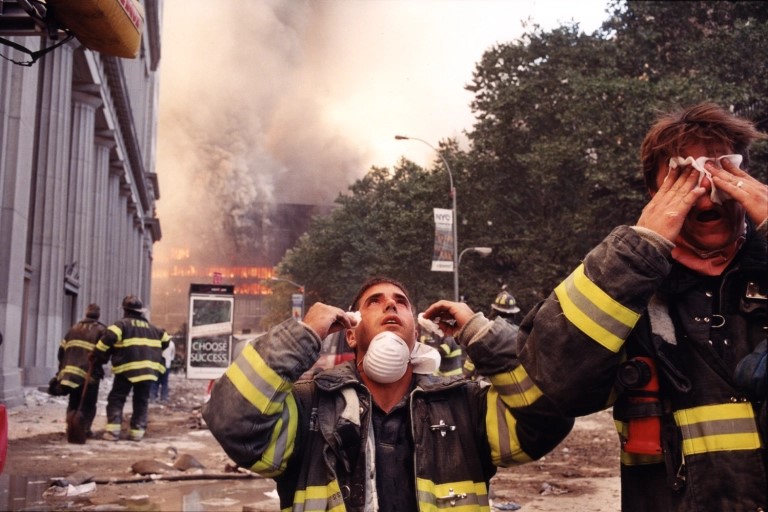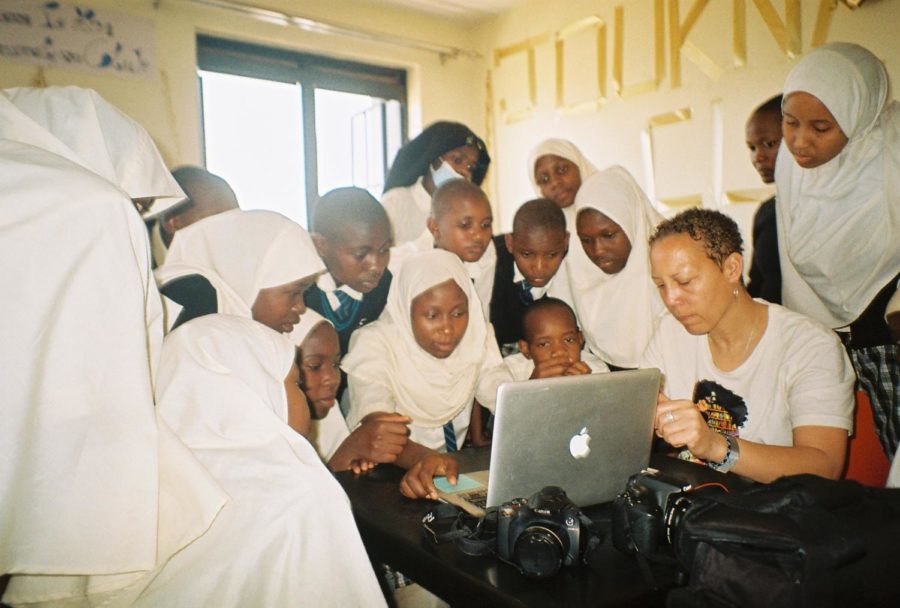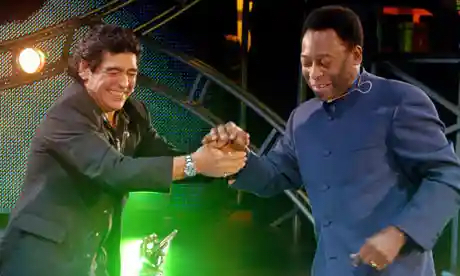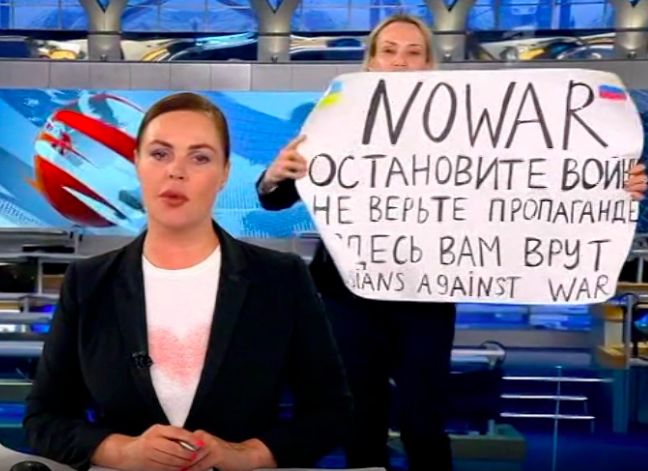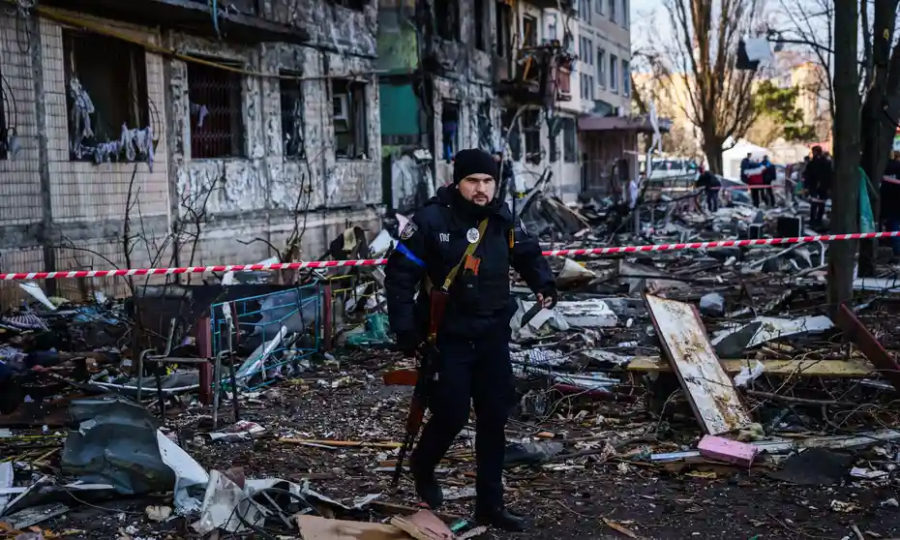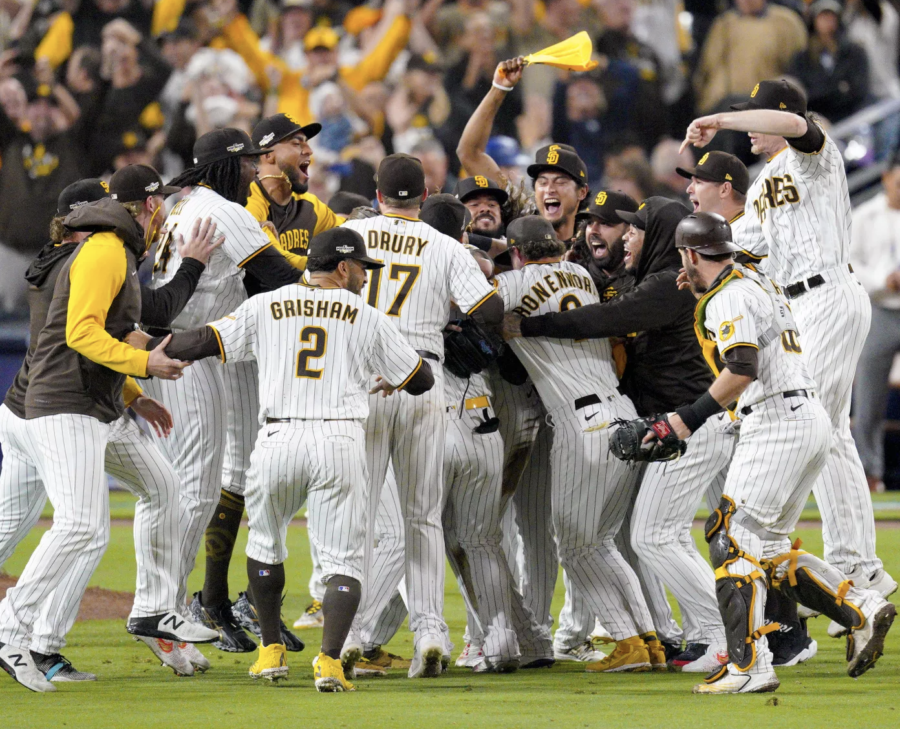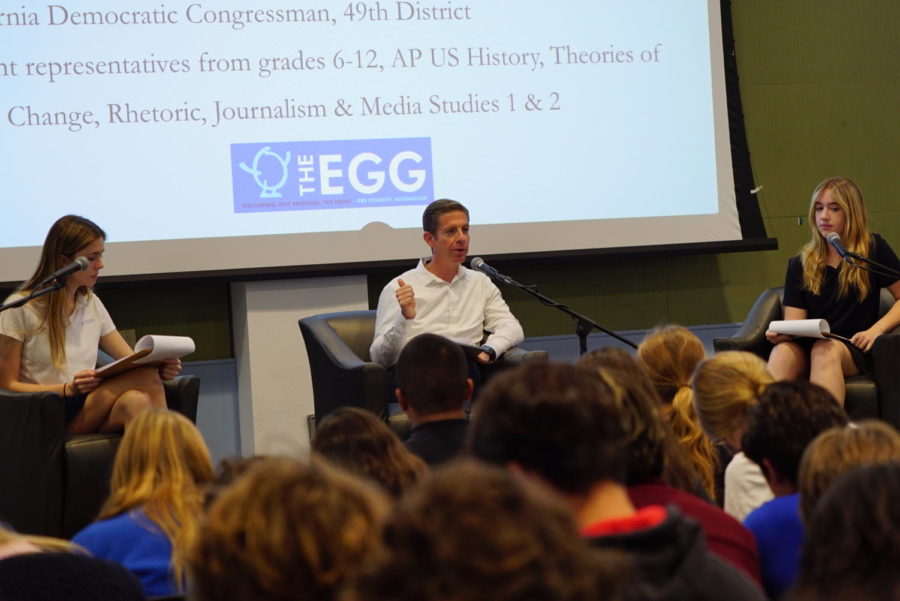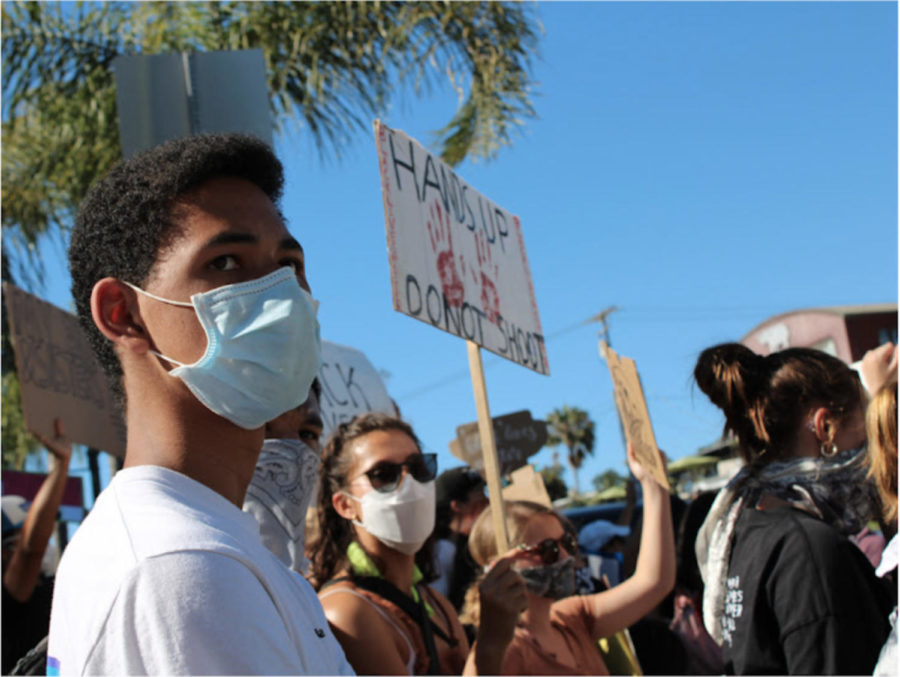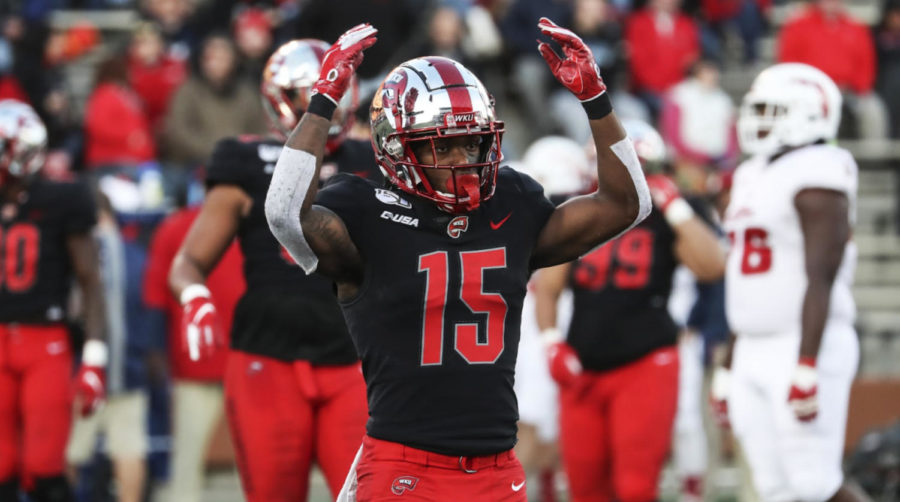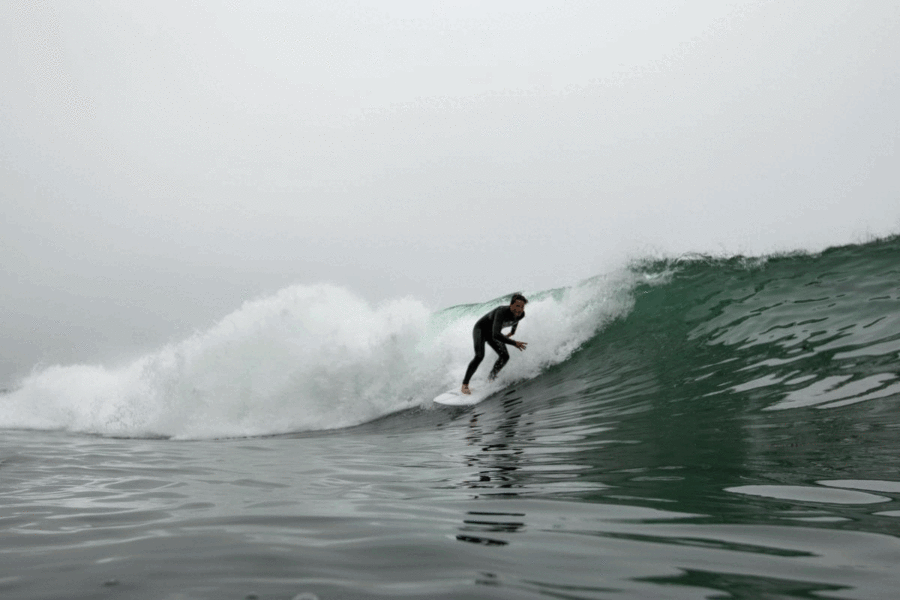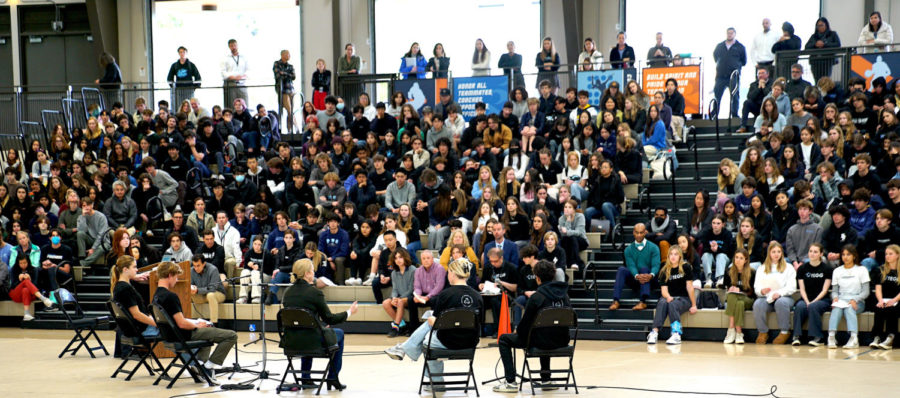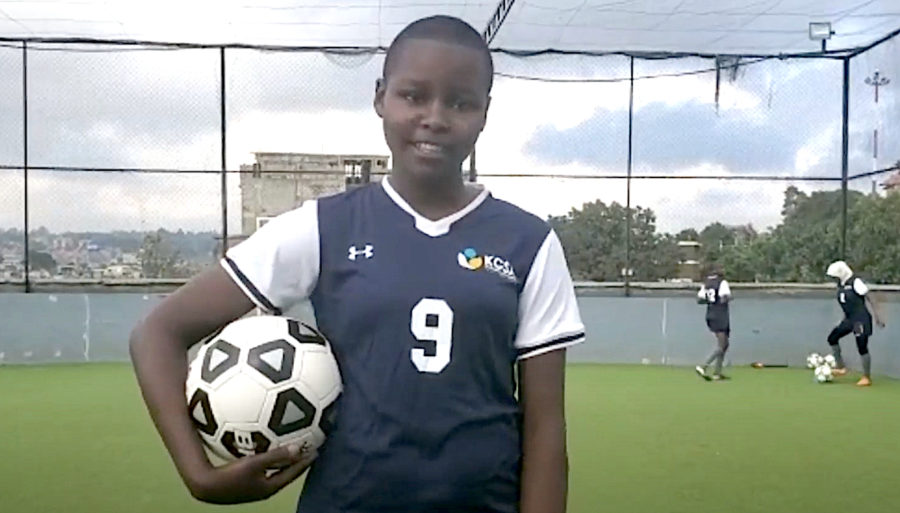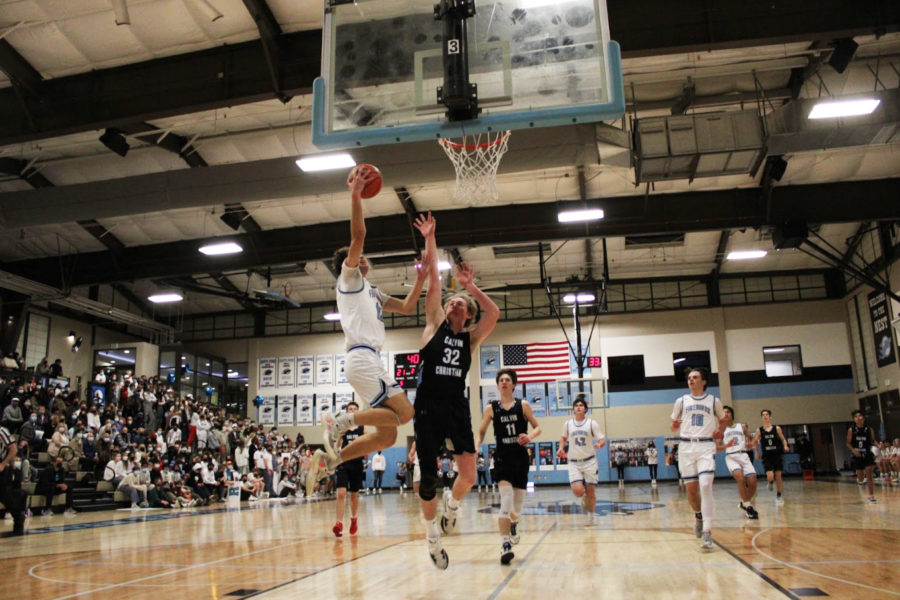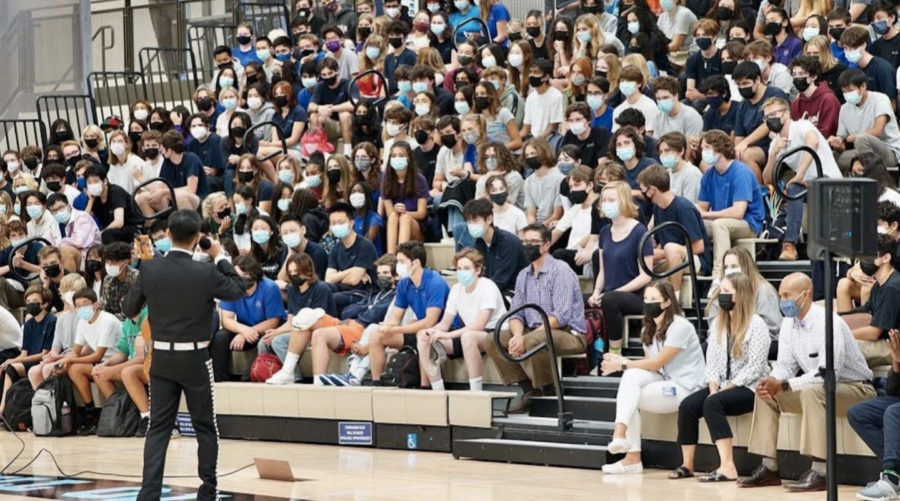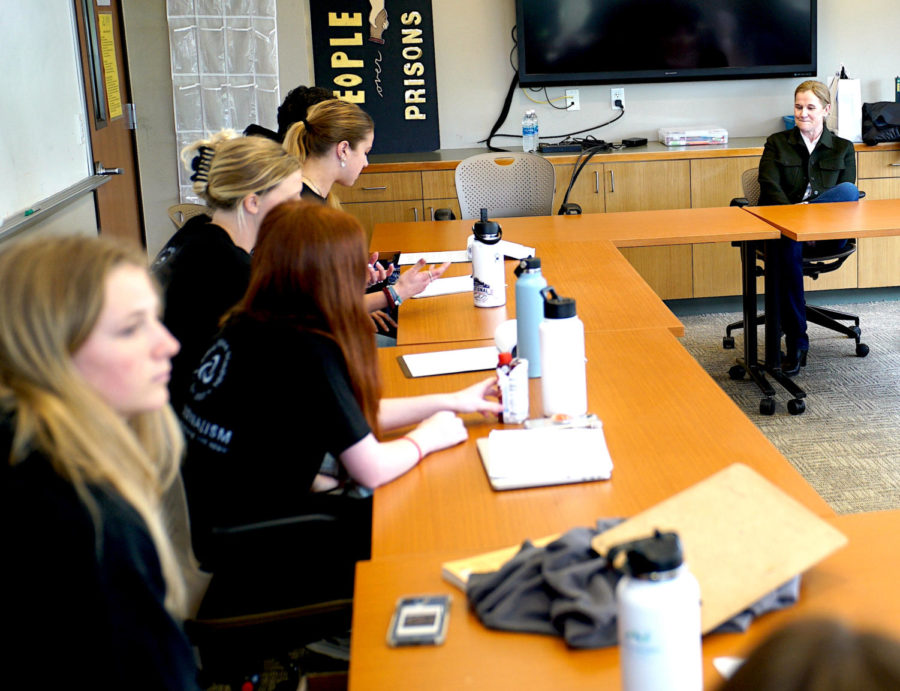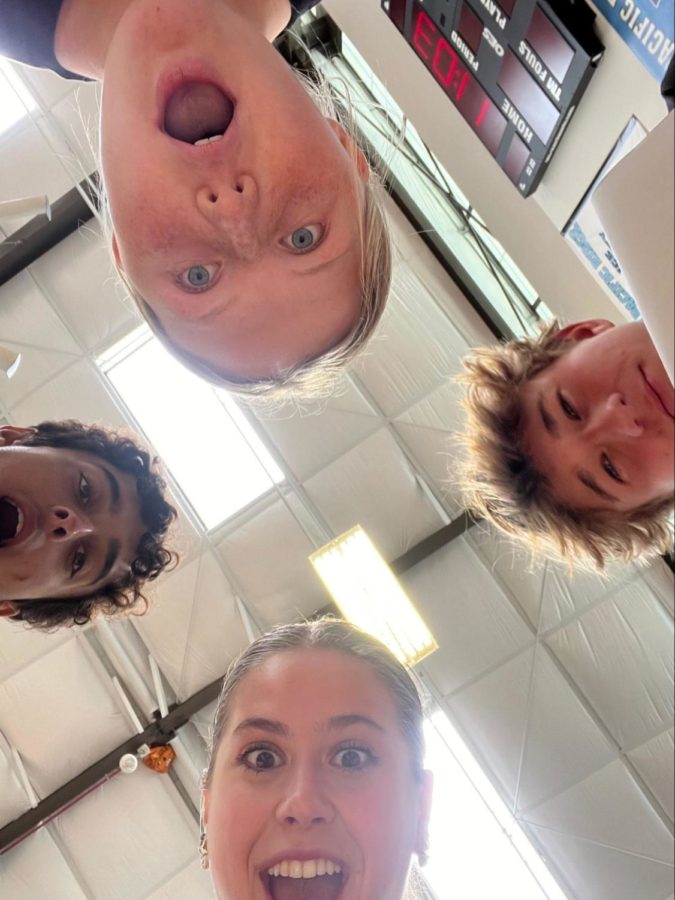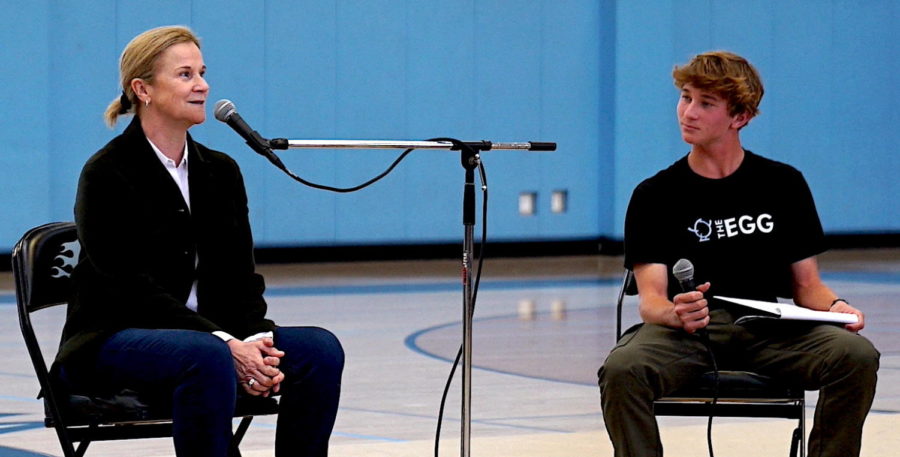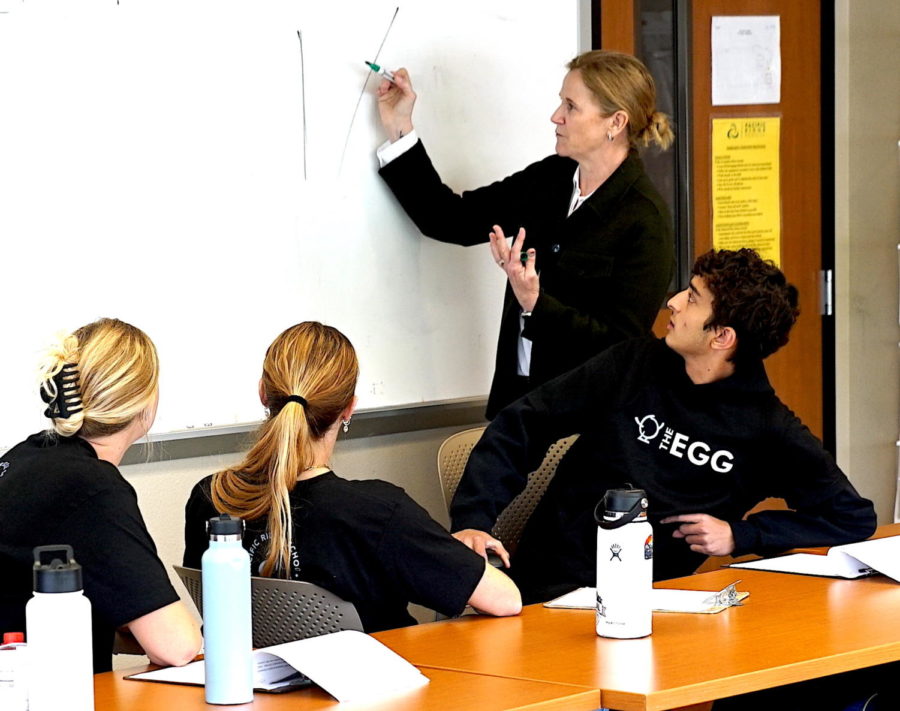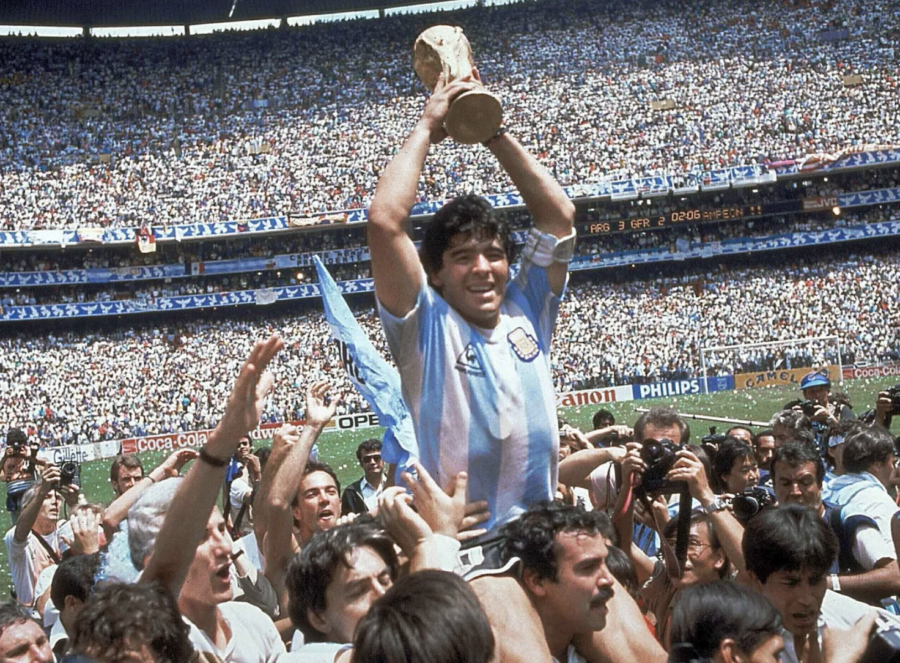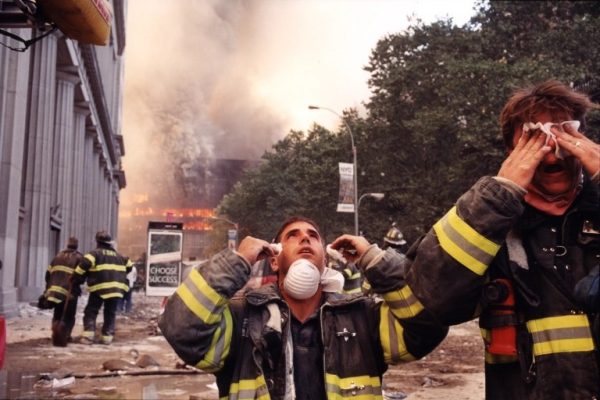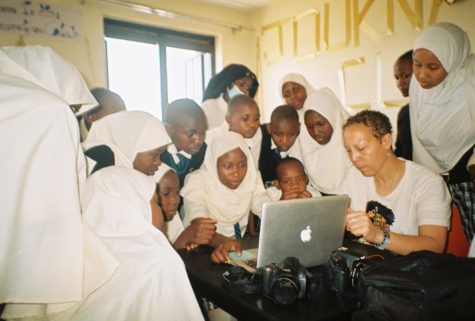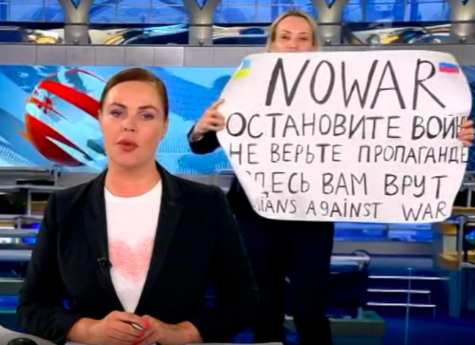War in Ukraine: Why is it Happening?
Evan Willsmore and Luca Colmignoli dig into the causes of the current war between Russia and Ukraine.
photo by Marcus Yam (Los Angeles Times)
Ukrainian police guard at Kyiv apartment block bombed by Russia.
The war in Ukraine has been big news for months now, but why is it happening? Many PRS students say that the Russia-Ukraine conflict started because of Russia’s goal to prevent Ukraine from joining NATO, but the Russia-Ukraine conflict has roots that go back much farther than that.
Russia and Ukraine share a border, and many Ukrainians speak Russian as their first language, while many Ukrainians also live and work in Russia. So the two countries and their populations have a long history of connections that goes back centuries. Ukraine was part of both the Russian Empire and the Soviet Union, but when the Soviet Union collapsed in 1991 Ukraine declared independence.
Many countries in Eastern Europe took that same direction after the Cold War, choosing to disconnect themselves from Russia and switching their focus westwards. Many of the countries that left the Soviet-dominated Warsaw Pact, or even the Soviet Union itself, went on to join NATO (the North Atlantic Treaty Organization). NATO was created in 1949, after World War 2 and the rise of the Iron Curtain, as a protective military alliance among 12 countries in order to guarantee protection from the Soviet Union. On the opposite side, the Soviet Union led the Warsaw Pact, a group of eight communist countries in Eastern Europe. Now NATO has 30 member countries, but the Warsaw Pact ended in 1991 when the Soviet Union was headed towards breaking up.
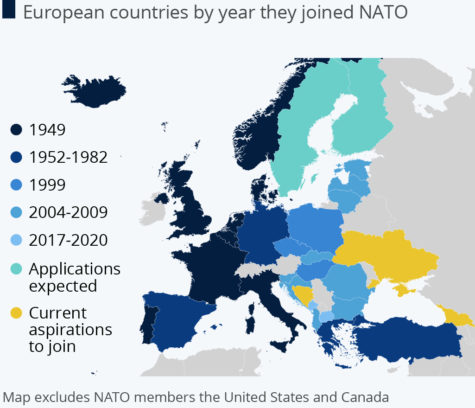
In 1999 Poland, Hungary, and the Czech Republic, who had all been in the Warsaw Pact during the Cold War, joined NATO in order to guarantee their protection from Russia. Former Soviet states such as Lithuania, Latvia, and Estonia followed suit in 2004. However, three countries on the European continent did not join NATO: Belarus, Georgia and Ukraine.
For the people of Belarus NATO never became a choice, as Alexander Lukashenko was elected president there in 1994. During Soviet rule, Lukashenko served in the military and as director of multiple state farms, then as an “anti-corruption” politician. Since 1994 he has established himself as “the last dictator of Europe” (a title he sometimes calls himself) and he remains in office today, the only president of Belarus since it became independent from the Soviet Union. Under Lukashenko, Belarus has been an important ally of Russia in the current conflict, allowing Russia’s military to invade Ukraine much closer to Kyiv by letting them attack through Belarus.
Ukraine, meanwhile, took a much different route than Belarus after the Cold War, increasingly moving away from Russian influence. In 2010, Victor Yanukovych became the fourth president of Ukraine and the Ukrainian people expected vast changes to be made en route to a more stable and modernized nation. In 2013, a deal was supposed to be reached between Ukraine and the European Union to create an official trade association agreement, hopefully leading to EU membership for Ukraine eventually. However, at the last minute President Yanukovych decided not to sign the agreement, instead creating closer ties with Russia.
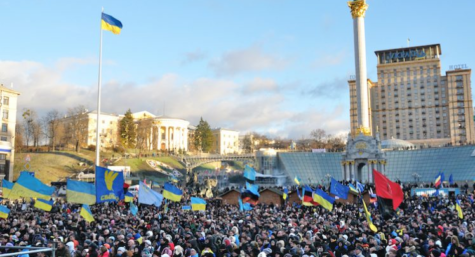
For many Ukrainian people this was seen as an enormous betrayal and protests, crackdowns and rioting began in cities across the country. Most of the focus was on Kyiv, specifically in a central area called the Maidan. Those events would later become known as the “Maidan Revolution” or the “Revolution of Dignity,” and one major result was Yanukovych fleeing the country. He was replaced by interim leader Oleksandr Turchynov, from February to June of 2014. On June 7th, 2014, the newly elected Petro Poroshenko officially took office as the fifth president of Ukraine.
However, tensions were far from over. Russian president, Vladimir Putin, saw the chaos and decided to intervene. In early 2014 Russian troops annexed the Crimean peninsula in the south of Ukraine, while also taking control of large areas of the Donetsk and Luhansk regions in Ukraine’s east. The sudden loss of territory sparked a new conflict known as the Donbas War (Donbas meaning the region of Donetsk and Luhansk) and that conflict has continued brewing and erupting until the recent full-scale invasion by Russia.
From 2014 to 2021 the Donbas conflict involved multiple military buildups and allegations from both countries, along with cyberwarfare attacks from Russia on Ukraine and outbreaks of violence. On April 3rd of 2021, Russian and pro-Kremlin media claimed that a Ukrainian drone attack resulted in the death of a child in the Donbas region. On April 6th of 2021, a Ukrainian serviceman was killed as a result of shelling on Ukrainian positions.
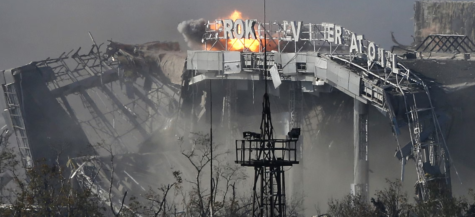
In early November of 2021 Ukraine was alarmed by reports of Russian military buildups near the Russia-Ukraine border, which led American officials to warn Europe of a Russian invasion of Ukraine. President Volodymyr Zelensky of Ukraine would eventually confirm that there were more than 100,000 Russian troops at the border. The conflict took a big turn early in 2022 when, on February 23rd, Putin announced a “special military operation” and began a large-scale invasion of Ukraine.
Currently, the general state of Ukraine is one of war and destruction as Russia continues to bombard and push its military forces into different regions, attempting to take control of the land. There have been a few local and short-term ceasefires, but finding a long-term solution that both sides can agree upon is a huge challenge. Ukraine continues to resist the invasion, more and more determined to be its own country, but Russia continues the pressure, motivated by keeping Ukraine out of NATO and the EU and inside Russia’s “sphere of influence.”
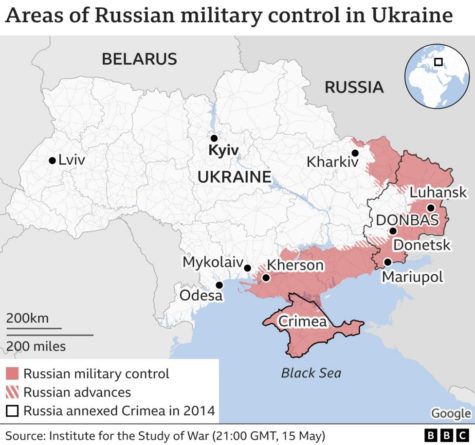
In early April there were changes to Russia’s military focus inside Ukraine. They pulled back from Kyiv, and more recently from Kharkiv during the month of May. In the north of Ukraine, the invasion has stalled or even been pushed back, due to Ukrainian resistance, Russian military mistakes, indirect support for Ukraine from NATO countries and others, and even the thick black soil of Ukraine that has bogged down Russian military vehicles. Instead Russian forces have now chosen to direct their attention towards the Donbas in the east and port cities like Mariupol on the south coast.
After Russia pulled back from Kyiv, many atrocities were uncovered in the region, leading to allegations of war crimes. In towns such as Bucha, mass murder was commited against innocent civilians, violating the laws of war and further deepening the crisis. Recently the first Russian soldier to be put on trial in Ukraine for war crimes was found guilty after he confessed to murdering a civilian and apologized to his victim’s wife.
Only time will tell when the war in Ukraine will begin to calm down, but these two countries involved have not liked or trusted each other for quite some time, and everything that has taken place recently is just making that worse. The eventual cost for both sides on the humanitarian and economic levels is still unknown, but the cost already has been enormous.
For more of our coverage of the war in Ukraine, see “War in Ukraine: PRS Students React” by clicking here. and “Information War: How PRS Students Learn about Ukraine v. Russia” by clicking here.
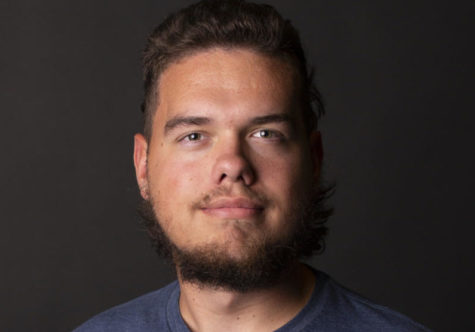
Evan Willsmore is currently in his senior year of high school at Pacific Ridge. For the past year, he has worked in the field of sports journalism, specializing...

Few words can describe the passion that PRS senior, Luca Colmignoli, shows for writing both in and out of Journalism & Media Studies class. He is an...

